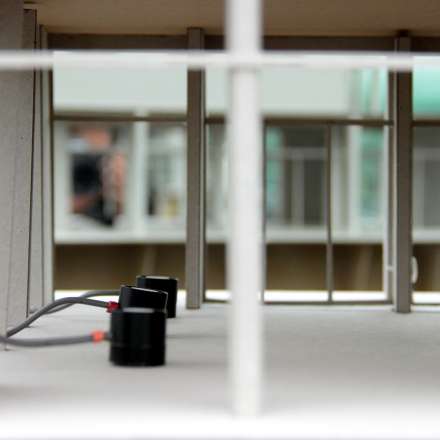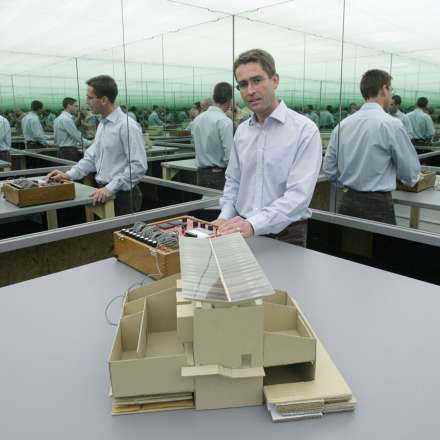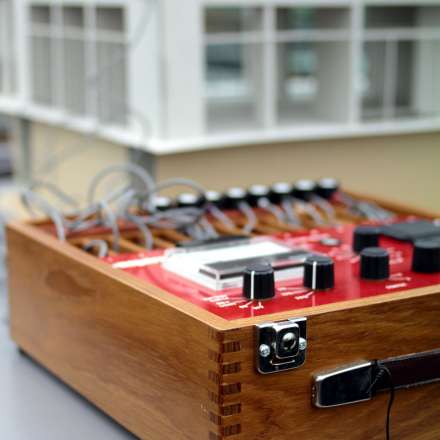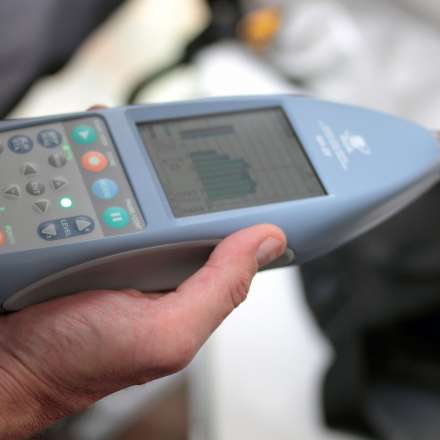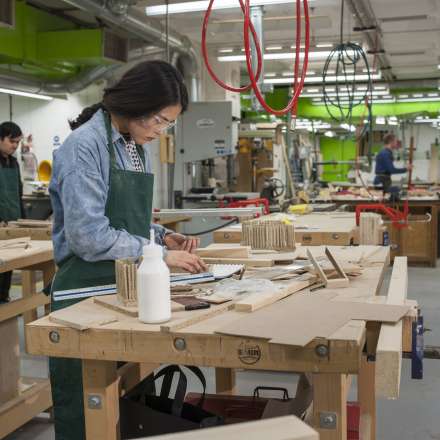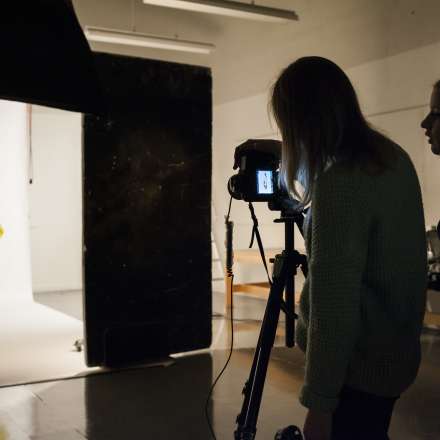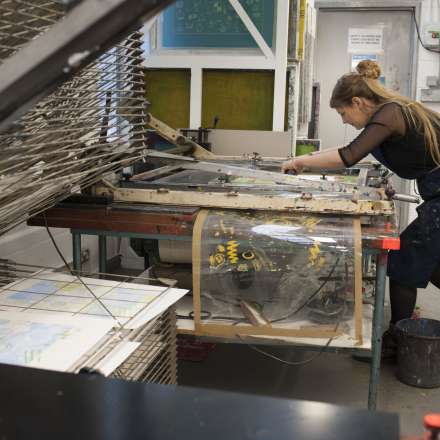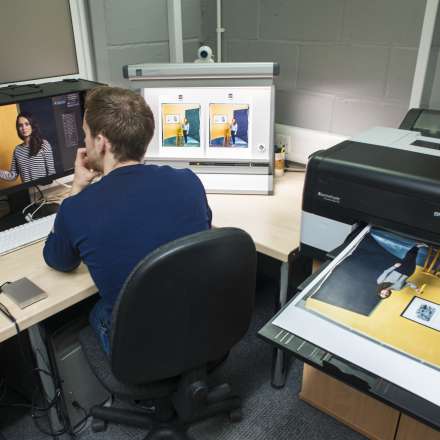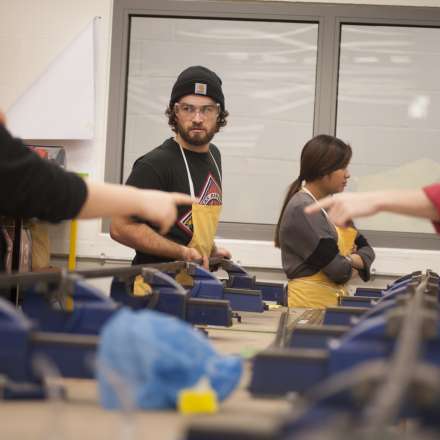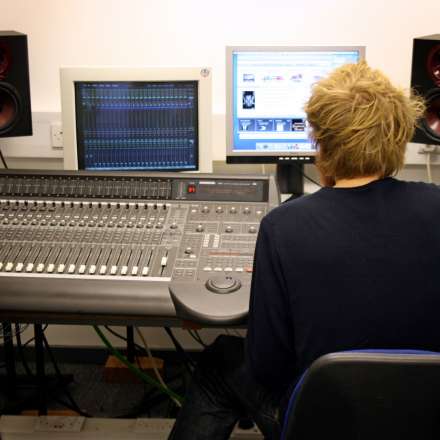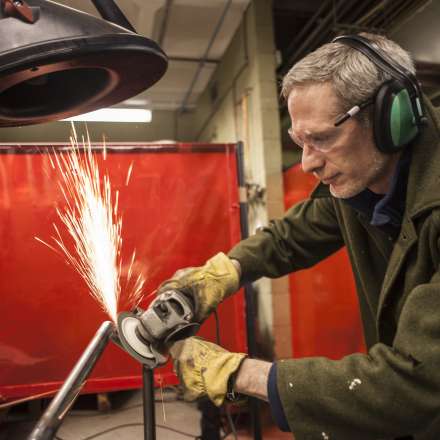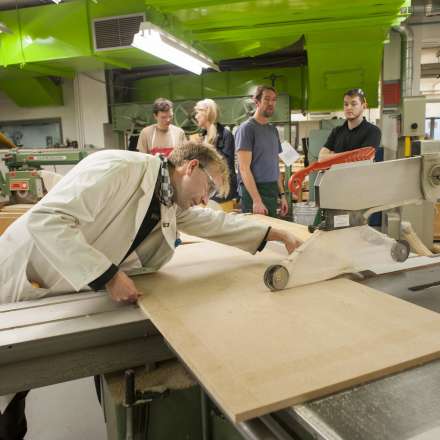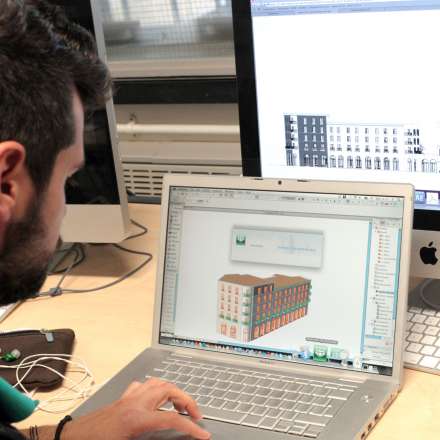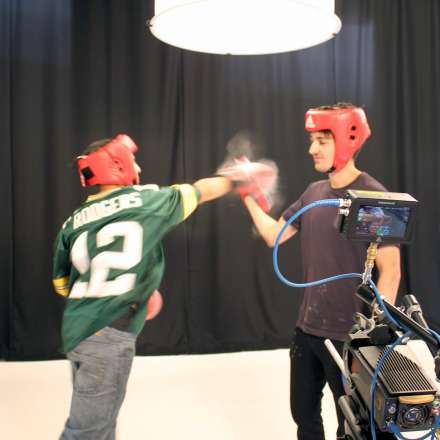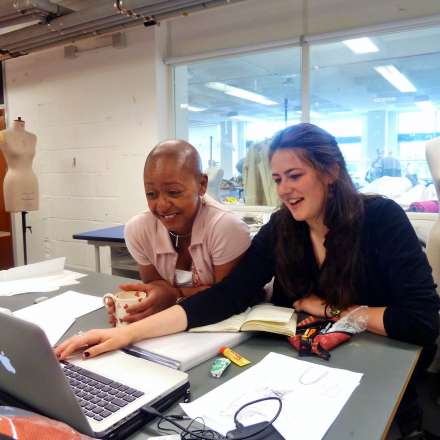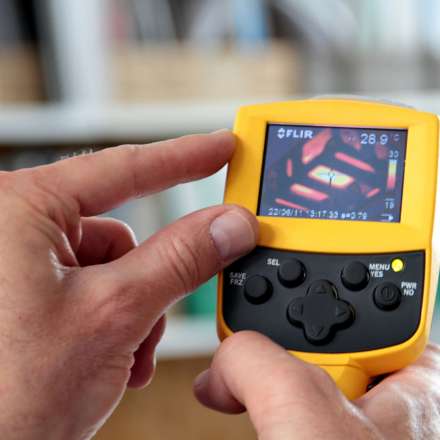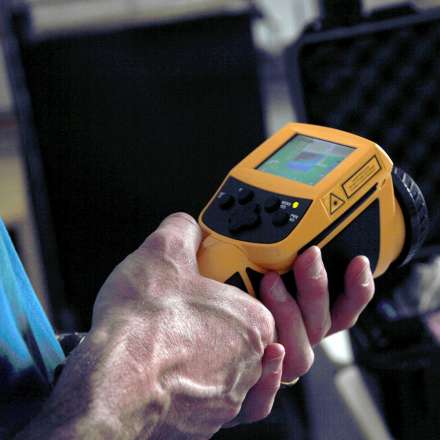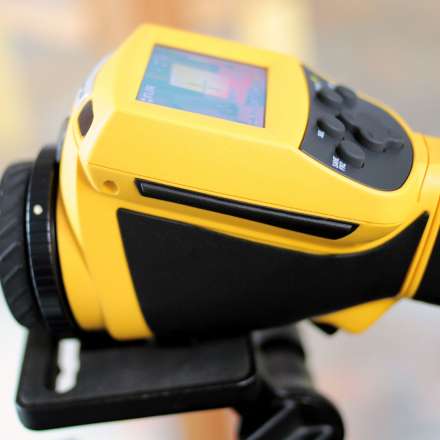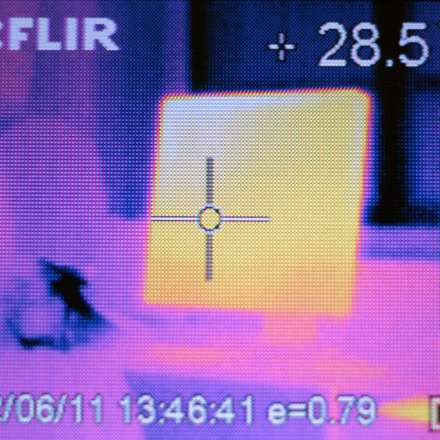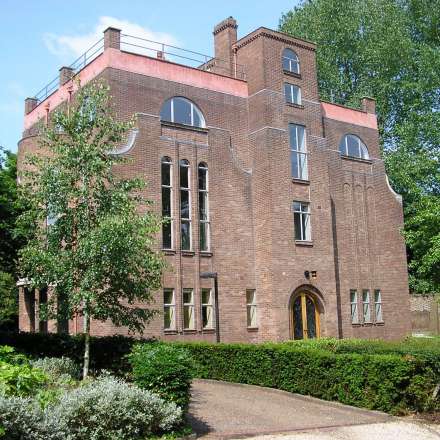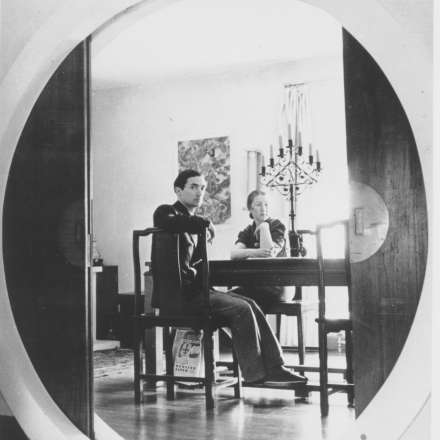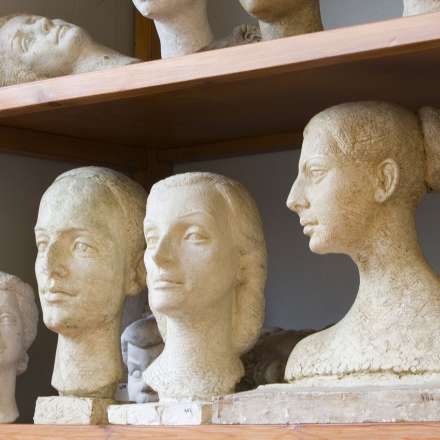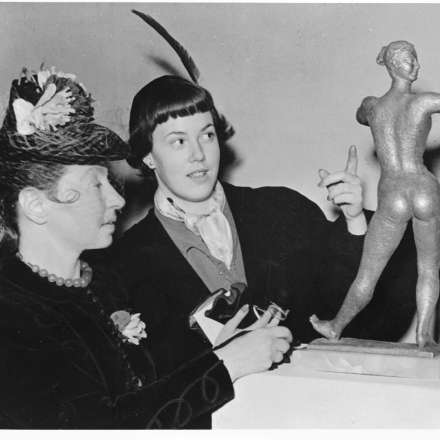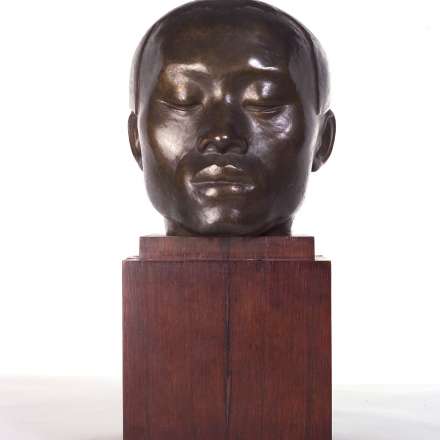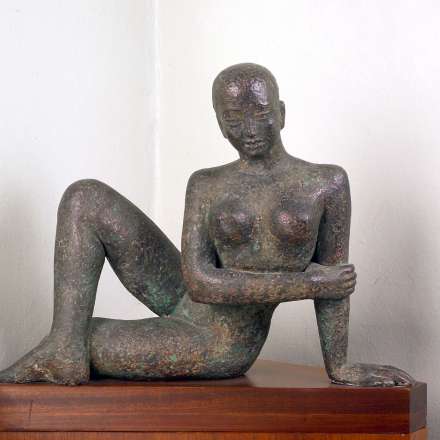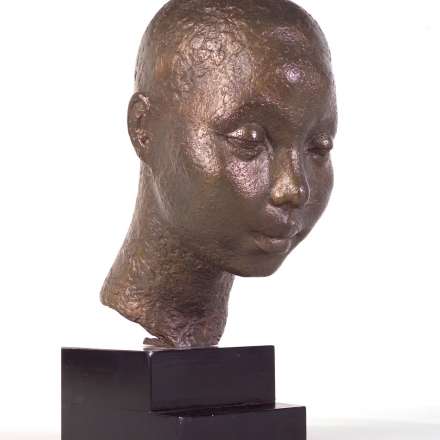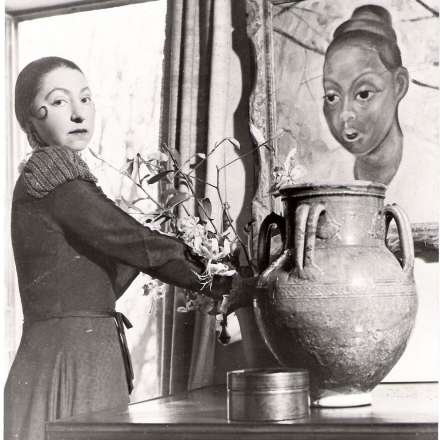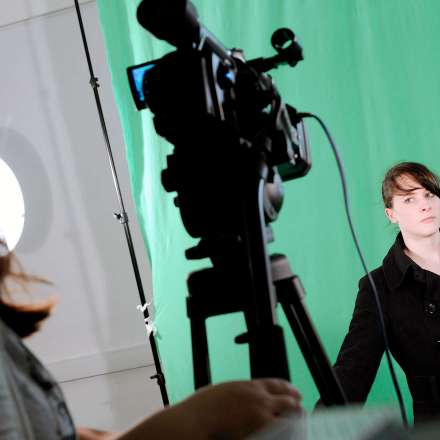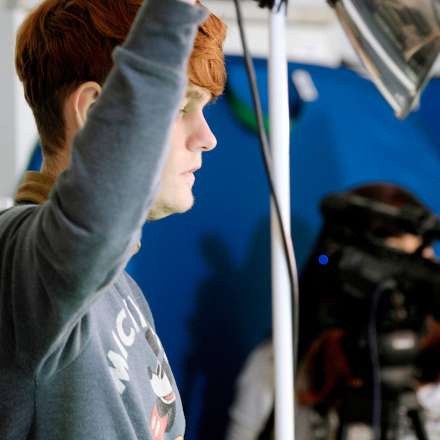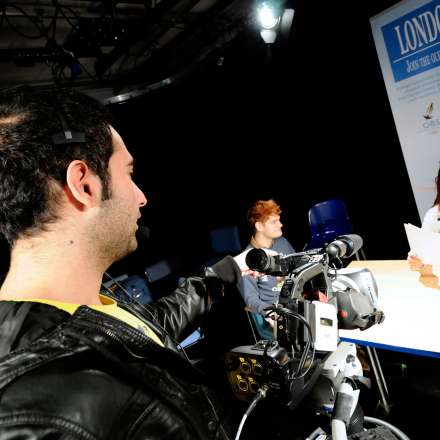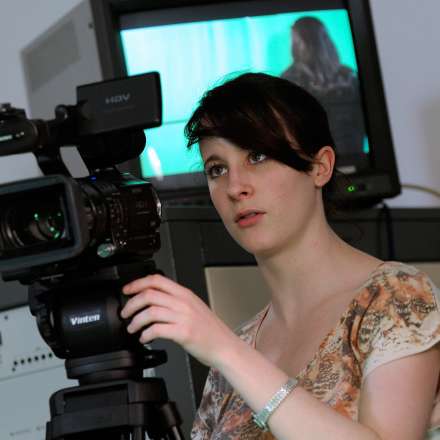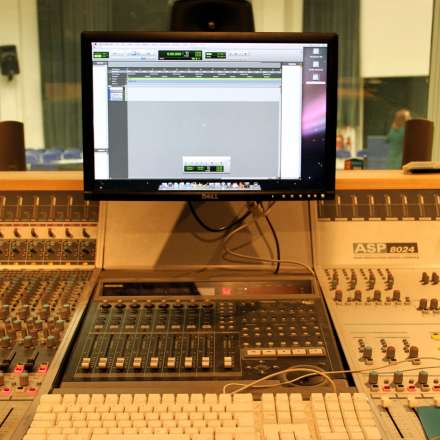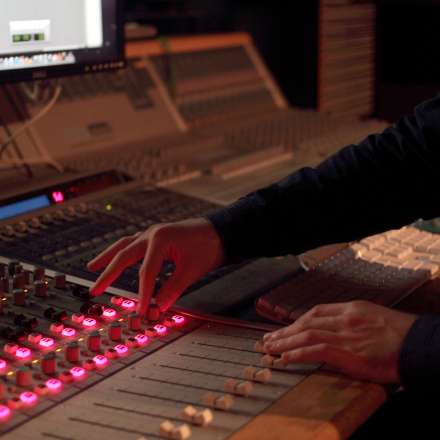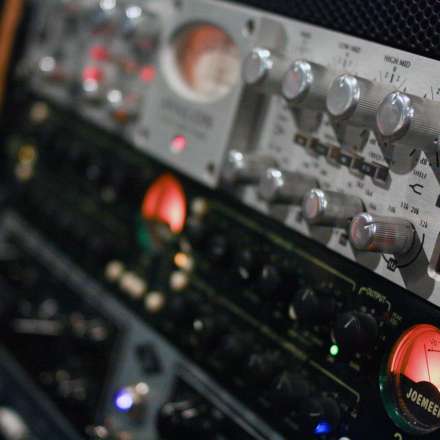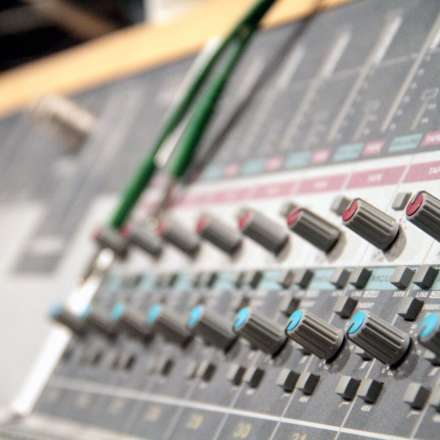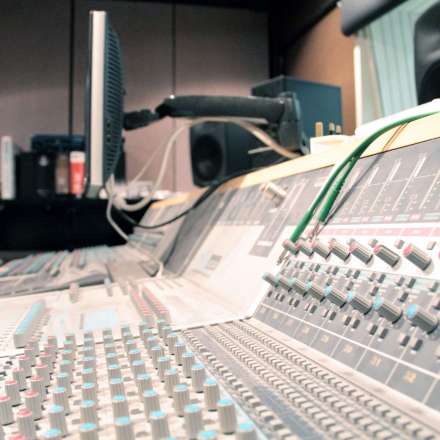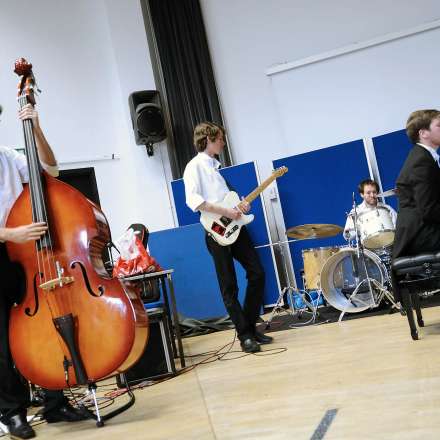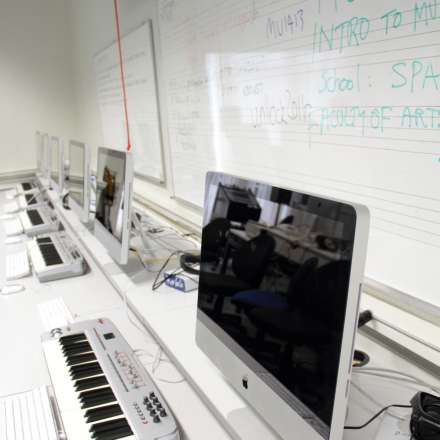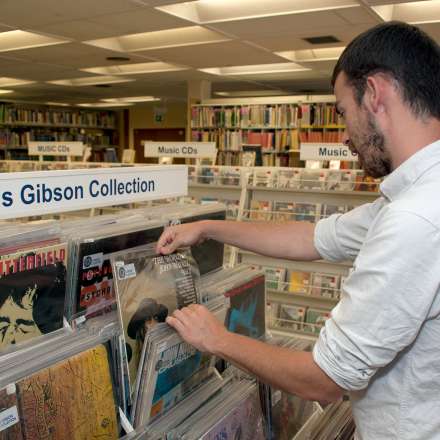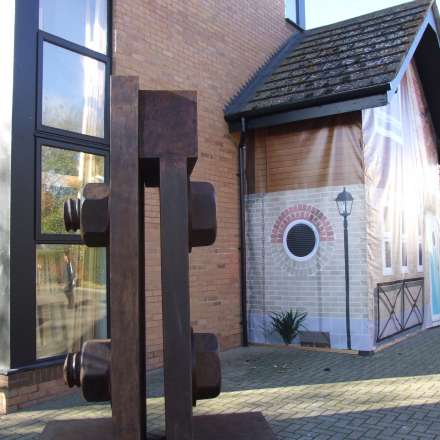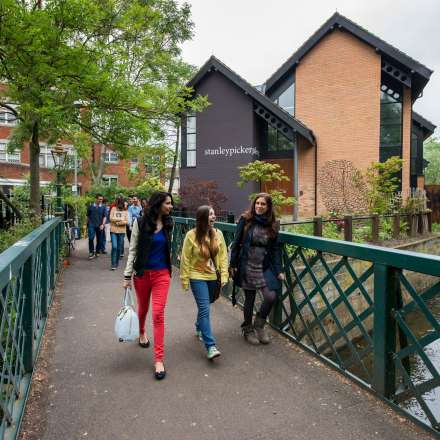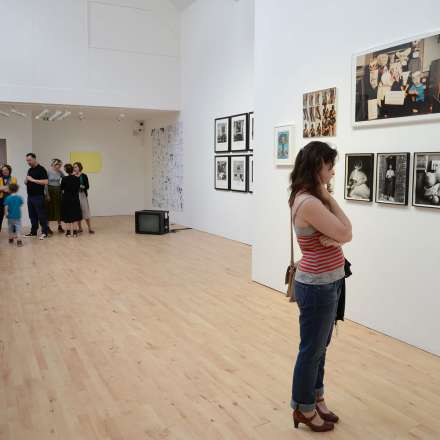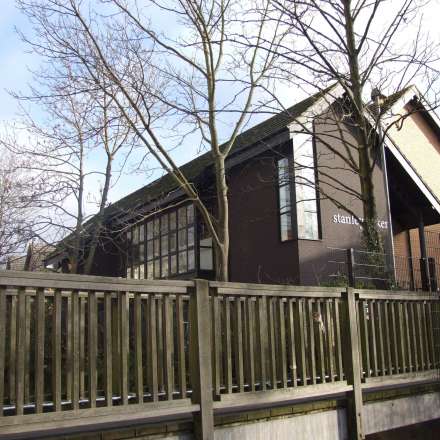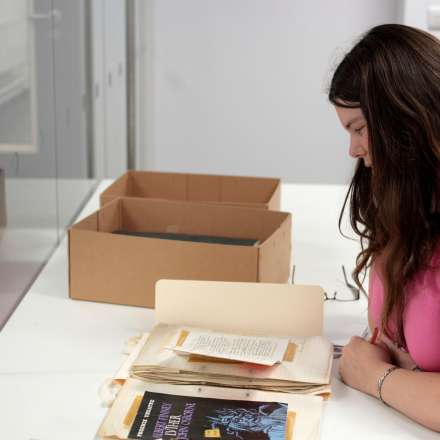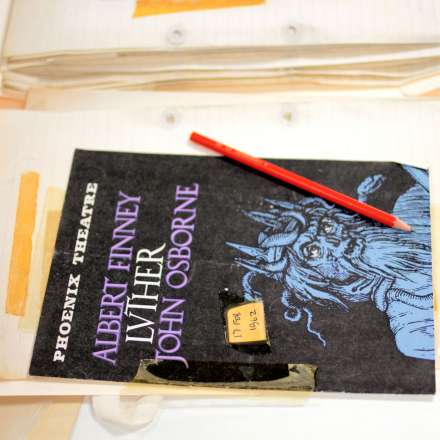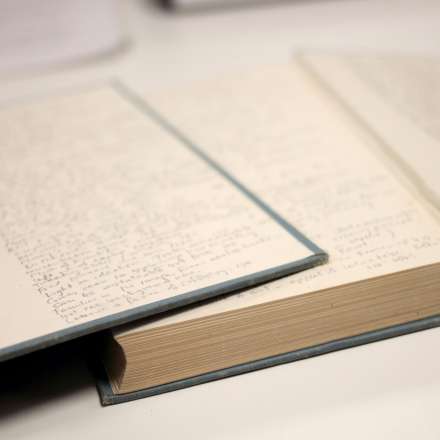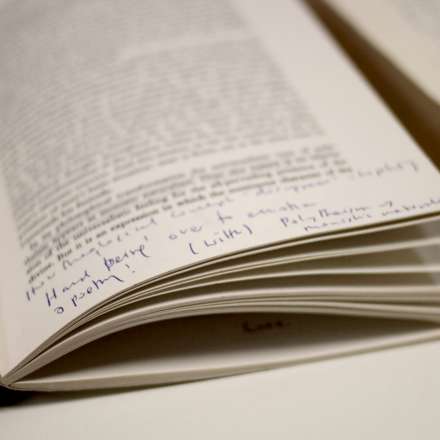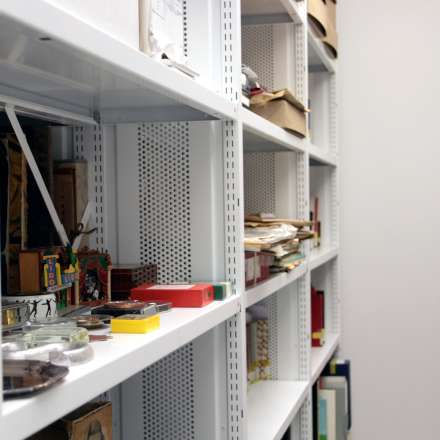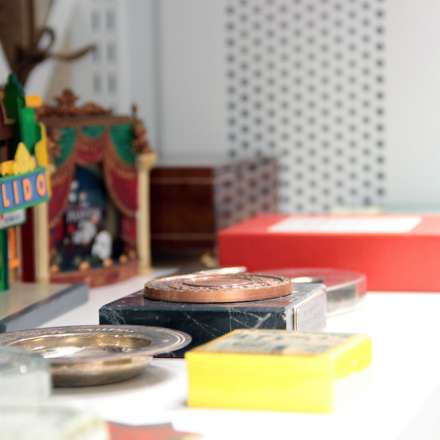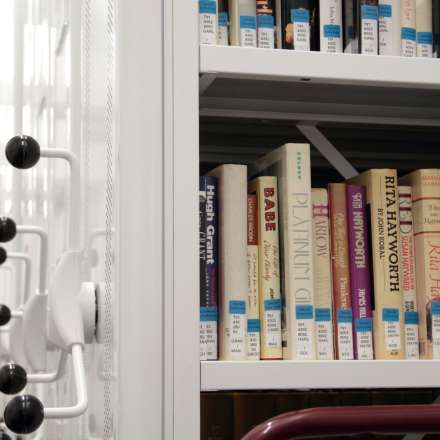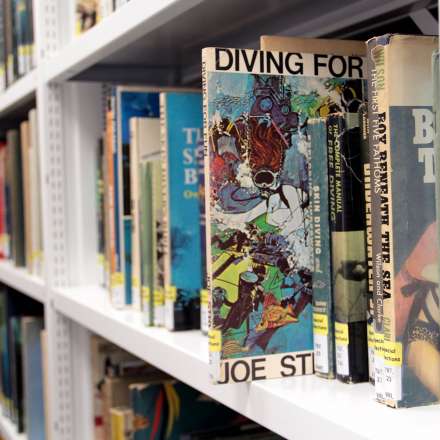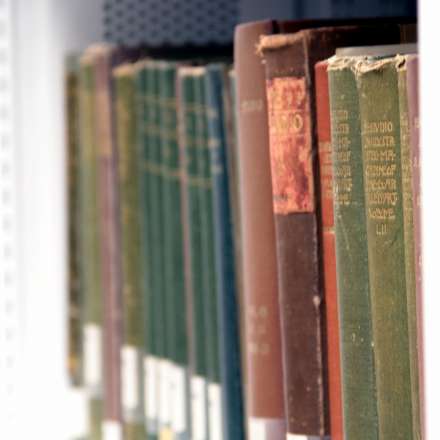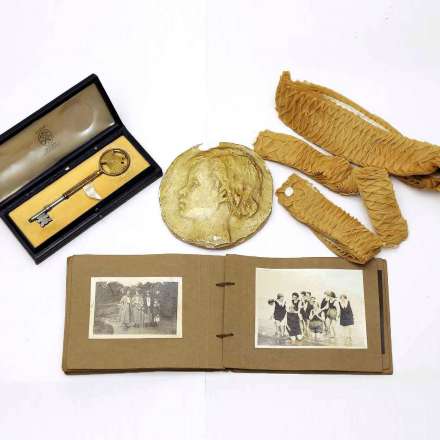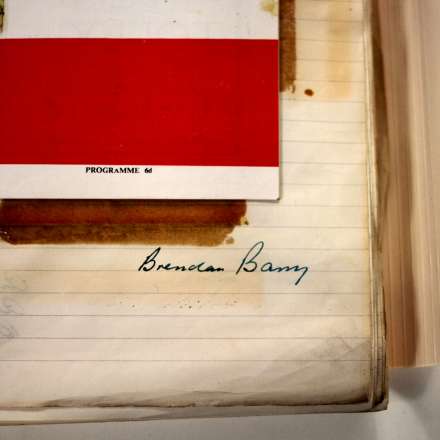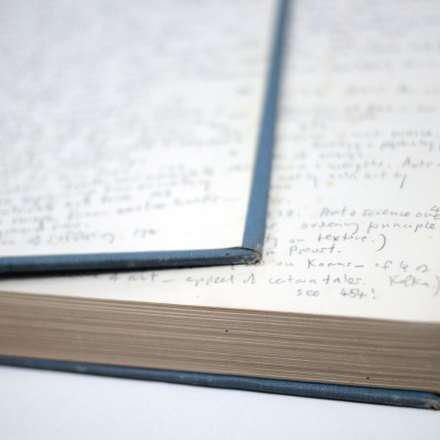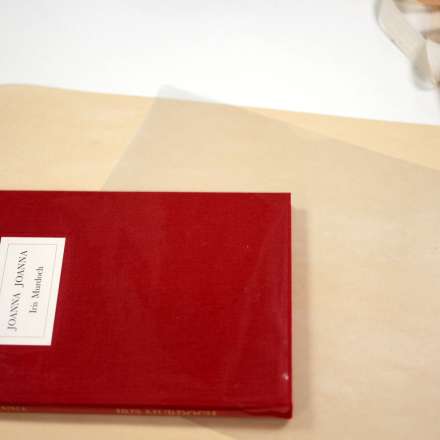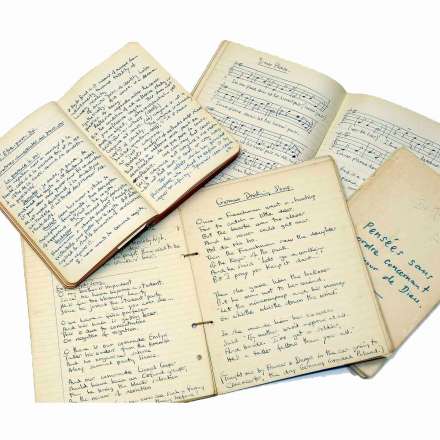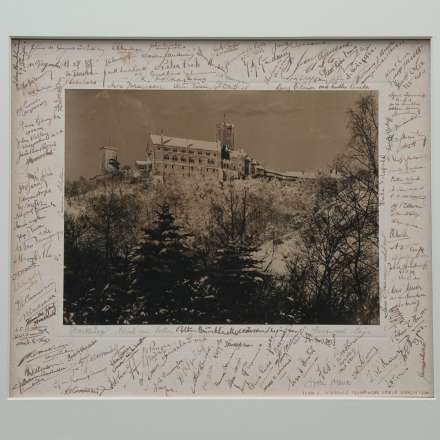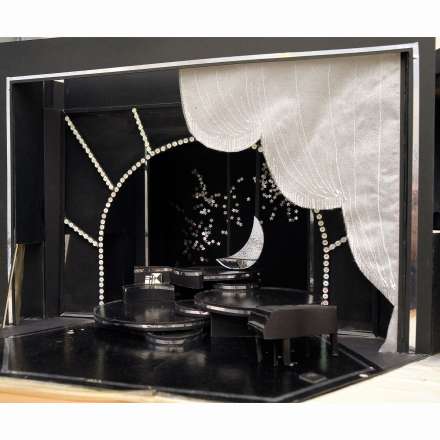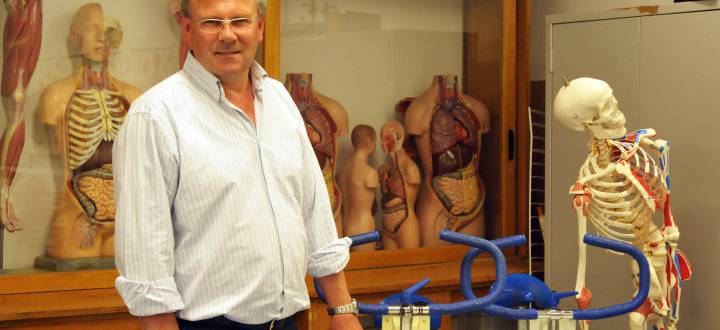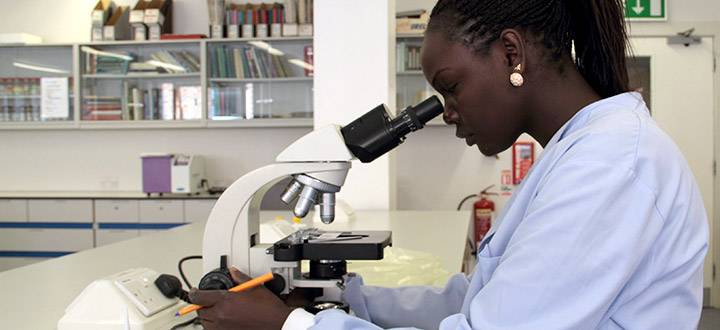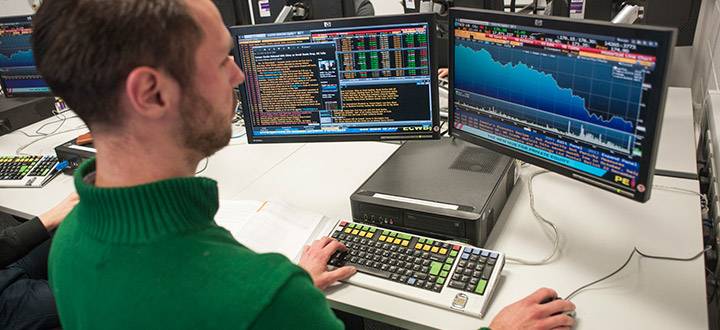Kingston School of Art resources
Architectural Science and Technology Laboratory ('ArchiLab')
ArchiLab is a state-of-the-art teaching, research and consultancy facility. It is designed for carrying out specialised science and technology activities relating to sustainable building design, simulation and implementation.
ArchiLab features sophisticated equipment for lighting and acoustic design, and equipment for testing insulation levels, airflow, air and surface temperatures and humidity. It also has equipment for model photography and computing facilities for architectural science applications. These specialist facilities are regularly used by local architects and engineers.
Find out more about the Department of Architecture and Landscape
Art and design studios and labs
Researchers in Kingston School of Art have benefitted from significant investment in state-of-the-art studios and labs:
- The 3D materials workshop features state-of-the art equipment and an interdisciplinary construction area, enabling work with a broad range of materials including wood, metal, stone, plastic, plaster, bio-resins, wax and ceramics.
- The premier filming space, post-production suite and animation suite house the latest technology including three Panasonic HVX200 hi-definition cameras, a Kino Flow lighting system and four rostrum cameras running professional stop motion capture systems.
- The professional-level photography suite features high-end workstations and associated professional hardware, including quality input and output devices within a colour-managed workflow to ensure colour accuracy.
- The newly-specified digital media workshops are home to 132 iMac workstations providing facilities for 2D and 3D design audio and video production and small and large format printing.
Centre for Efficient and Renewable Energy in Buildings (CEREB)
CEREB is a unique teaching, research and demonstration resource for the built environment, hosting a number of renewable and intelligent energy solutions. CEREB has been developed in partnership between London South Bank, City and Kingston Universities with funding from the Higher Education Funding Council for England (HEFCE), the London Development Agency (LDA) and M&E Sustainability.
Located at roof level of the new London South Bank University teaching facility K2, the Centre has direct access to data from all the different technologies providing the services to the working building, together with the innovative technologies built into the Centre itself. There is also the ability to showcase developing technologies and to trial new products in a real life setting where the results can be closely monitored.
This makes it an invaluable resource for understanding how to design, operate and manage technologies for future low carbon buildings – both new build and retrofit. CEREB and the new K2 building host many different forms of renewable or energy efficient technologies. All of these are working to provide the services to the Centre and the 8,500 m2 building below it. These include solar fibre optics; ground source heat pump; solar hot water; photovoltaics; wind turbines; tri-generation; and phase change materials. Researchers from the three partner institutions are monitoring and collecting data from all of these technologies to research the effectiveness of each in the urban setting.
David Heneker Archive
The David Heneker Archive contains the papers of musical theatre composer David Heneker (1906–2001). Amongst the many shows he wrote or contributed to are Half a Sixpence, Irma la Douche and Charlie Girl. The collection contains his working papers for the many shows he worked on, including script drafts and original scores and lyrics for songs, as well as memorabilia such as programmes and posters. The collection is fascinating for anyone interested in musical theatre and David Heneker's work, as well as illustrating how stage shows are taken from initial idea to production and beyond.
Dorich House Museum
Dorich House Museum is the former home of the internationally-acclaimed Estonian sculptor Dora Gordine (1895–1991). It holds a major collection of her bronzes, paintings and drawings, and a superb collection of Russian Imperial art, gathered by her husband, the Hon. Richard Hare. The two studios, gallery and top floor apartment were all designed by Gordine herself in 1935/6 in the art deco modern style.
Kingston University rescued the house and its collections from dereliction in 1993 and the newly-restored building was opened in 1996. The house became a museum in 2004 and was awarded full accreditation status in 2009 under the MLA Museum Accreditation Scheme.
The museum's curator, Brenda Martin, is a member of the Modern Interiors Research Centre. The museum has generated and facilitated a number of successful research initiatives, including the first major retrospective of Dora Gordine in 2009. This exhibition brought together 59 of her sculptures and drawings, as well as 18 works by contemporaries including Jacob Epstein, Aristide Maillol, Frank Dobson, Gertrude Hermes and Henry Moore. The exhibition was accompanied by a wide programme of talks, seminars, workshops and community events.
Film and media facilities
Researchers in film and media have benefitted from significant investment in high-end filmmaking equipment, including a Red One camera and Sony EX3s. The department provides specialist labs equipped with I-Mas and specialist software including Final Cut Studio Pro and Adobe CS5 Master Suite.
A dedicated research room is equipped with PCs and a high-end spec MacPro. There are also audio recording facilities for voiceover and Foley work with Logic Pro and Pro Tools software and a film studio facility with backgrounds and green wall.
In addition, the newsroom and journalism lab provide extensive facilities and resources for media work.
Innoversity
Kingston University has established a centre for design and innovation with a particular focus on benefitting the health and cultural sectors. 'Innoversity' brings together researchers, academics and postgraduate students from design, business, engineering and social science to tackle real-life business challenges.
The aim of this facility is to break down the barriers between different subject areas to allow new products to be invented and creative business strategies developed. The centre enables collaboration to take place between design (human values), business (viability) and technology (feasibility). It was launched with a £250,000 award from the Higher Education Council for England.
Iris Murdoch Archive
Kingston University has an established research interest in Iris Murdoch, recognised internationally as one of the most significant British writers of the 20th century.
In 2004 Kingston University acquired two important archives, which provided substantial new resource material to add to its existing extensive Murdoch collections. The first was Iris Murdoch's working library, kept in her Oxford home, in which she made detailed annotations recording her immediate reactions to the many philosophers and writers with whom she engaged in her own writing.
In the same year the University acquired the working archive of Peter Conradi, Iris Murdoch's authorised biographer. This included correspondence, typescripts, working notes, interview transcripts and cassettes, background research, press cuttings and reviews gathered for essays and publications relating to the writer. The archive also includes letters written by Murdoch and her unpublished book on Heidegger with holograph corrections.
Further additions to the Murdoch Archives have included Murdoch's working library from her London home and a number of individual items and letter runs (a number comprising some hundreds of letters) from contemporaries and friends, such as Raymond Queneau and Hal Lidderdale. These working archives, and other material on or by Iris Murdoch, support the work of the Centre for Iris Murdoch Studies. The Murdoch Archive catalogue is available online.
Music facilities: Visconti Studio
Our practice-based researchers in music and composition benefit from the Coombehurst complex, which provides a range of professional studio facilities and practice rooms.
Our key facility is Visconti Studio, a unique analogue and digital hybrid recording and production space. Visconti Studio is based around an extraordinary 300-square-metre octagonal live room stocked with vintage and rare recording equipment (Studer, Neve, Neumann, Universal Audio, Roland Space Echo). It has a unique collection of instruments including a Mellotron, a Hammond organ with Leslie cabinet, and a Steinway concert grand piano. A full equipment specification can be found here.
As an inclusive creative practice and research hub, Visconti Studio's research aims are
- To facilitate both the preservation and further evolution of analogue music recording and studio practices
- To experiment with analogue and digital practices in order to explore the agencies inherent to studio-based creativity
- To interrogate cultural and technological histories, analogue nostalgia, and the materialism(s) of analogue and digital studio through documentation and analysis
- To have an impact on scholarly and practice-led research, creative and educational practice and industry decision-making
The Studio's large acoustic space and collection of vintage analogue equipment and instruments have attracted acclaimed musicians, producers and engineers. Legendary producers such as Tony Visconti, Chris Kimsey and Pete Walsh work in the Studio with staff, students and visiting artists to share their wealth of knowledge and produce new materials. We organise public research events, workshops and podcasts in Kingston.
Our core researchers are Isabella van Elferen, Leah Kardos, Michael Gatt and Jess Aslan, whose research interests are listed on our staff page. Researchers affiliated with the Studio explore the relationship between the analogue and the digital more widely, study practices of media archaeology, research cultural nostalgia and heritage, or question media specificities and media affordances. Those include Oded Ben-Tal, Scott Wilson, Maria Chatzichristodoulou and Simon Brown. Practice-researcher and composer Oded Ben-Tal applies innovative machine learning methodologies to music, exploring the potential of artificial and biological intelligence working together in musical creation; his research has attracted AHRC awards and his compositions have received international accolades.
Visconti Studio's research is closely aligned with the creative and music industry. Our partnerships with influential music producers open up a wealth of knowledge and professional networks, not only to Kingston University students and researchers but also to our many visiting artists. Aiming to revive and preserve analogue practices to propel them into the digital era, Visconti Studio aspires to impact the music industry by bringing together analogue equipment, practices and histories with digital technology. We collaborate with, among other industry partners, Olympic Studios and Trident Audio. Our record label, Acid Grass Records, develops student recording and production, and the Kingston University Stylophone Orchestra is bringing out the world's first stylophone album, Stylophonika, with the Kingston-based Spun Out Of Control label.
The Music Department owns an extensive collection of instruments, including a bespoke synth lab, 28 pianos, a harpsichord, drum kits, and orchestral and classroom instruments. There is also a double-size Javanese gamelan and a set of djembe drums. The Nightingale Resources Centre is home to the music library, which holds an extensive collection of books, anthologies, scores, sheet music, periodicals, and audio and video recordings. The University also subscribes to an excellent range of e-resources for music, including Grove Music Online, RILM and the Naxos Online Recordings catalogue which are accessible from all University workstations.
Publishing News Archive
The University holds the records of Publishing News magazine, which was published for members of the book trade between 1979 and 2008. The collection contains a full run of the magazine, as well as photographs, research files compiled by the editors of the magazine, records relating to the British Book Awards, and other documents. The collection provides a perfect snapshot of the publishing and book trades in the late 20th century.
Sheridan Morley Theatre Collection
The University has acquired the books and papers of renowned theatre critic Sheridan Morley (1941–2007). The collection includes Sheridan Morley's collection of books as removed from his home.
The library, which runs into many thousands of volumes, covers the subjects of theatre, film and biography, amongst others. Some of the books are signed by the authors, or contain personal dedications. The collection at Kingston also includes:
- Sheridan Morley's personal papers and other items, amongst them many volumes of press cuttings of his reviews; research notes for many of his biographies including that of Noel Coward; correspondence with many actors, including John Gielgud, Alec Guinness and others; photographs; documents relating to the various productions in which he was involved; and personal documents such as his passports and diaries
- documents and photographs relating to his father, the actor Robert Morley, and his grandmother, the actress Gladys Cooper
- a number of objects collected by the critic.
Find out more about the Sheridan Morley collection.
The Stanley Picker Gallery
The Stanley Picker Gallery was established in 1997 and provides access to a broad programme of exhibitions, collaborative projects, events and research initiatives.
The Gallery engages audiences within the University and the wider community, encouraging and assisting the development of research in the arts. Its broad programme reflects the changing diversity and convergence of contemporary arts practice. The Gallery plays an important role in bringing together artists, designers, academics and students to engage in collaborative practice and it is active in generating and facilitating new innovative work. This is further enhanced by artists in residence and an inclusive programme of education events and outreach projects.
Theatre programme collections
The Archives and Special Collections hold two collections of theatre programmes.
Cary Ellison Theatre Programme Collection
Cary Ellison began his career as an actor in 1939, spending many years touring in theatrical productions. Eventually Ellison moved on from acting and joined casting directory Spotlight in 1953. As part of his work Ellison would tour repertory theatre companies twice a year, making notes on each play, including the cast and director, to help match the actors with suitable parts, and to identify future stars. He retired from the spotlight in 1980 and died in 2002.
The Cary Ellison Theatre Programme Collection consists of the theatre programmes he collected on his tours of repertory theatres from 1953 to 1980 with his notes on the cast and plays. The notes they contain are very detailed and, in some cases, run to great length. The collection provides a history of British repertory theatre for the latter part of the 20th century, as well as providing a glimpse into the early careers of some well-known stars.
Brian Smith Theatre Programme Collection
Brian Smith was born in Australia in 1930. He was an extremely successful scholar and became a teacher before deciding to leave for Britain in 1956. In 1960 he became head of maths at Hammersmith and West London College where he worked until his retirement. Outside work, Brian was extremely passionate about the arts in all its forms: cinema, literature, music, theatre and ballet. In his early days as a teacher, he supplemented his income by working as a dresser in London's West End. Throughout his life he continued to visit the theatre regularly to see plays and concerts.
The Brian Smith Theatre Programme Collection contains all of the theatre programmes that Brian Smith collected through his many years of visiting the theatre. A number of programmes for first runs of significant plays are included, and he saw a great many productions by the Royal Shakespeare Company (RSC). There are also programmes for operas and classical music concerts. The collection forms a great resource on London theatre in the late 20th century.
Contact us
- For non-student research enquiries, email the Research Office
- Research contacts
- Graduate Research School contacts
- Business and Enterprise contacts
- How to get to Kingston University
Contact us
- For non-student research enquiries, email the Research Office
- Research contacts
- Graduate Research School contacts
- Business and Enterprise contacts
- How to get to Kingston University
